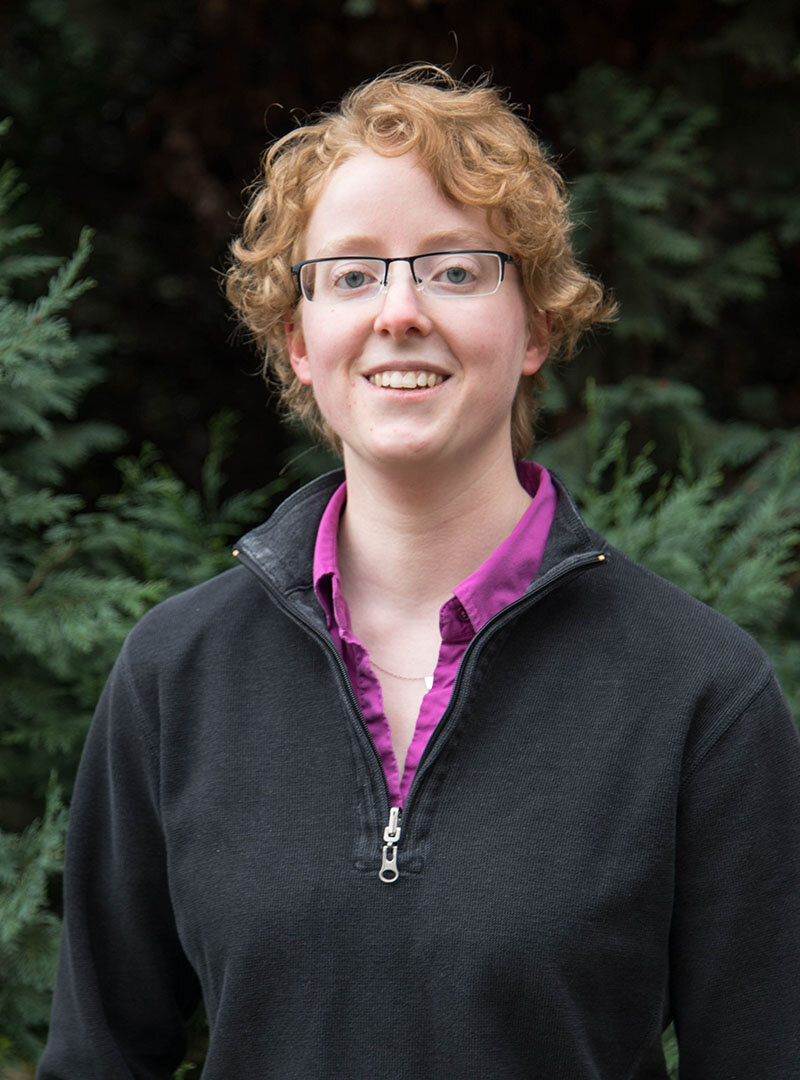In All Its Complexity
Natalie Klco is a Sherman Fairchild Postdoctoral Scholar Research Associate in Theoretical Physics who is interested in discovering how quantum computers can help efficiently simulate the subatomic world. She is also a percussionist and marimba performer and, recently, a nature photographer. Klco, who joined Caltech last fall and has been living in Seattle during the pandemic, became interested in music at an early age. Her love of the marimba led her to double major in music and physics at Ohio University, where she was lured by the percussion studio’s “array of beautiful marimbas” and the university’s support for pursuing both passions. On forced musical hiatus due to repetitive motion injuries, Klco has been focusing predominantly on her physics and a new artistic outlet: photographing the trees, flowers, and other natural wonders on walks around her neighborhood.
“This is a COVID project. It is a way to get my body away from the computer and intentionally notice the nature around me. I’m not a serious nature photographer; I was simply taking my family on walks with me from afar, sharing with them the small details of nature that I find fascinating.
“To me, these different aspects of my life—my music, my science, and now my photography—are all expressions of one underlying interest. They are three complementary ways to explore complexity.
“Science is a great language for describing complex systems. When things occur on times or distance scales significantly different than those of our everyday human experiences, it can be difficult and understand their importance. Through experimental data, analysis, and theoretical synthesis of events occuring in fractions of seconds to billions of years and on scales smaller than the size of a proton to those of colliding black holes, we gain a deeper ability to connect with our world.
“Music is a different language for understanding emotional and neurobiological complexity. Through intricate compositions of sound from solo performances to symphonies, emotional trajectories that have developed over decades can be captured, processed, and holistically reflected upon.
“Photography is becoming, to me, a language for capturing, admiring, and exalting details of the world that I would have normally ignored. As another way to connect with nature’s complexity, this meditative process has made me more attentive, more curious, and more thoughtful about my place on the earth.
“Humans tend to reduce complexity, whether it is ecological, sociological, or computational, before truly understanding the importance of that complex structure. In nature, this has culminated with species being on the brink of extinction before humans realize how exquisitely evolution has embedded them into the elaborate networks that characterize healthy ecosystems. In computation, this has involved realizing that the quantum world is an essential part of a computational framework capable of representing the complexity of nature.
“So, the photography has also been a small attempt to encourage, mainly in myself, an appreciation for the complexity and diversity of nature in the hope of finding a way to motivate humans to celebrate it rather than cause its destruction.
See more of Klco’s work at nklco.yolasite.com.



